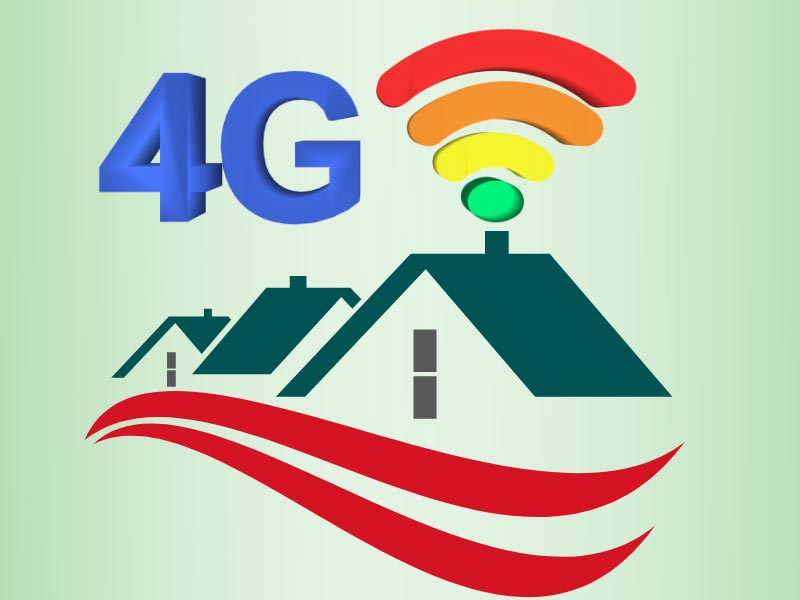Nothing is irritating than a slow-loading webpage, a buffering movie, dropped calls, or unsent text messages. Instead of cable or fiber broadband, more homes choose 4G or 5G cellular connectivity. People select cellular for various reasons, including the cost of wireless broadband, but most commonly because cell service is simply the fastest alternative accessible in remote areas. However, 4G signals have limitations. In this article, we’ll go over how do I boost my 4G signal at home.
In an ideal world, our cellphones would function properly all day. Many people, ironically, have weak signals inside their homes. Signal-muffling architecture and distracting equipment may be present in your home, which was once the only reliable area to make a call. If you don’t have a clear view of the nearest cell tower from your home, you’ve got a problem because you’re unlikely to relocate anytime soon.
There are at least eight ways to boost cell signals at home for free or cost. Improving your cell service is a trial-and-error process, and there’s no way to know if these methods will work until you try them. You may have to switch carriers in the end. However, if you’re prepared to troubleshoot, you can discover that your calls become a lot clearer.
Why is my 4G signal weak at home?
Depending on the source of the problem, you have a few choices for improving your cellular service. Most of the time, your cell signal is weak due to:
- The nearest cell tower’s location
- Signal-blocking construction materials
- Natural barriers like Mountains and trees.
- Capabilities of your phone
What does 4G signal boosting mean?

When you can reliably connect to 4G, it’s a fantastic piece of technology. While most homes can readily connect to the 4G network, the signal cannot penetrate the inside of some larger buildings or buildings with thick walls, preventing you from using 4G indoors. Having a solid connection to your mobile network is essential in the modern house.
People frequently wait by their home window, hoping to catch a signal for an essential call or video conference, generating unnecessary stress and production delays. Have you ever been viewing a video on your phone in one room and then taking it to another room on the other side of the house while still watching it, only to have your video freeze due to a connection loss?
If one of these situations sounds similar, 4G boosting may be the answer. You can take the 4G signal from just outside your building and boost it throughout the building by applying the methods to improve cell signals at home outlined below. Every phone in the building now has complete 4G network coverage.
How do I boost my 4G signal at home?
1) Get a 4G cell phone signal booster
A signal booster, often known as a “repeater,” does precisely what its name implies: amplifies your cell signal. Place the unit in an area of the house with good reception, such as a window sill, and it will broadcast a more robust signal throughout the house. Some repeaters include an external antenna that can be mounted outside.
2) Move to a different room in your house
Inside your home, cellular coverage may be spotty. Because of the carrier tower’s direction, other rooms may have a better signal, or tall trees on your property may be blocking the signal. Connectivity may improve depending on where you are in the house – on one side, near a large picture window, or on a higher level.
3) Try a femtocell
Femtocells are also known as “microcells” (AT&T) or “network extenders” (Verizon), both of which sound eerily similar to boosters. You can also use it in the same way: place it in your home, and it will transmit a strong cellular signal. On the other hand, the femtocell must be plugged into your router to access your internet connection. That’s how your phone communicates with the carrier’s servers.
4) Get a new phone
If you have an older device, upgrading to a new phone or hotspot may allow you to connect to new bands. Newer devices are compatible with newer versions of the 4G standard, allowing for higher data rates.
5) Remove your phone case
Cell signal strength can be reduced by 90% with some phone cases. Depending on its design, a phone case might completely or partially obstruct your phone’s antenna. Another option is a case with a built-in antenna that syncs with your phone’s antenna.
6) Make calls over Wi-Fi
You may already have a Wi-Fi network set up in your home. You’re already saving money on your cellular data plan and avoiding overages if you use it for home internet access on your smartphone and tablet. Apps like Skype, Google Hangouts, Apple’s iMessage, and other third-party messaging apps like WhatsApp can also be used with Wi-Fi to make calls and send texts.
7) Get outside
If you have a strong signal outside but a weak signal once inside, it’s possible that the building’s materials are interfering with your coverage. Boosting your cell signal is as simple as stepping outside.
8) Switch Carriers
In rare cases, one carrier may have more excellent coverage than another, but if you’re switching providers solely to increase your cellular service, proceed with caution. If your weak mobile service is caused by one of the factors listed above, switching carriers will not necessarily solve your problem.
Bottom line
At home, not everyone has a strong cell signal. While this is especially true in rural areas, poor cell signal strength does not only affect rural areas. They frequently affect people who live in cities because of physical obstructions that prevent mobile signals from reaching their phones. Are you looking for a way to boost your cell phone signals at home? Get 8 methods for doing so above, including our top tip (signal boosters) for establishing a solid and dependable cell signal.
